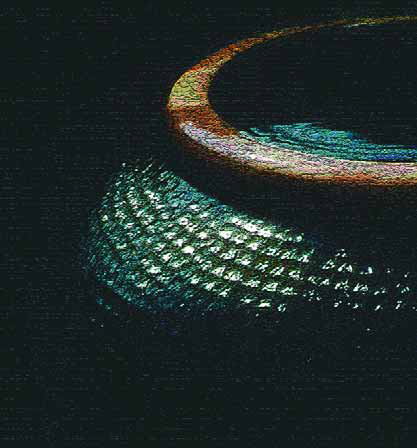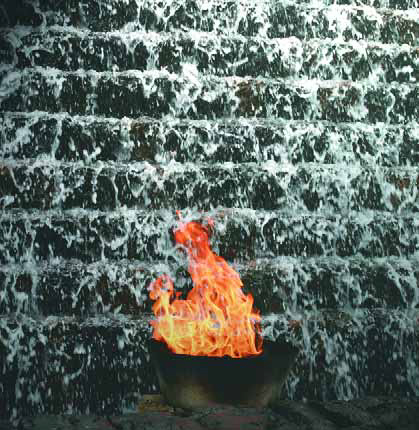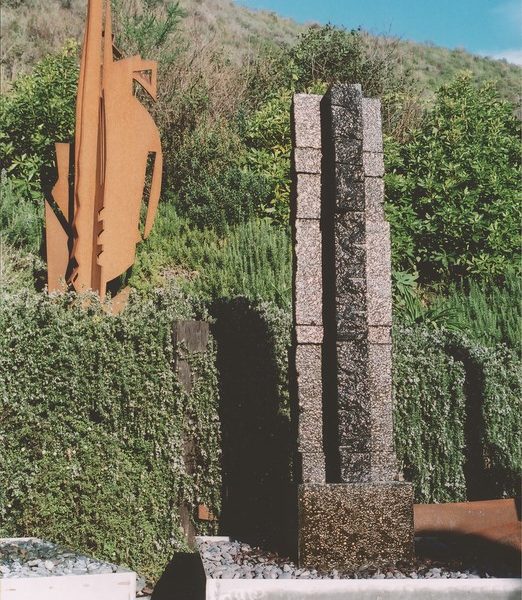Fountains
Composition of this article began with an e-mail I received a while ago from a colleague working in Australia. "What," he asked, "is the maximum allowable depth for a fountain in the United States?" As simple as it sounded, when I took the time to research the issue I found that there was a noticeable lack of definition. I took the next logical step and called various people I know in the watershaping industry and asked them the same question. Surprisingly enough, nobody could point me to any code, regulation or standard that defined what depth a waterfeature's pool could
It's unusual to think of such a wonderfully decorative watershape in this way, but the one featured in this edition of "Details" was the result of a client's desire for a measure of safety for the front of his home. The house is located on an intersection in a hilly part of Manhattan Beach, Calif., where the steep, downhill orientation of the streets occasionally lead cars to make turns at unwisely high speeds. Given the orientation of his front door, my client was concerned that, with a bit of very bad luck, he might someday find an out-of-control-driver's car in his foyer. As is the case with many
As watershape designs become ever more creative and adventurous, there's an increased need to help clients and other project participants visualize our plans. Indeed, presentation is a topic of great importance these days for designers from both the pool/spa industry and the landscape trades, so much so that it's become a fixture on educational calendars and one of the cornerstones of the Genesis 3 curriculum. What has everyone excited about upgrading the way they present their ideas is that there are various good ways to get the job done. To be sure, having the ability to draw is a tremendous asset - some would say an absolute necessity - but fortunately for those who are
June 6, 1944, was a cold, dark, cloudy day along the northern coast of France. When the Higgins boats carrying allied troops slapped their gangways into the cold sea 60 years ago this month and released their human cargo onto the beach, withering machine gun fire greeted the soldiers from German bunkers high above the beach. Before the day was over, 6,603 Americans had lost their lives in what became known as D-Day - the start of the allied invasion of Nazi-occupied Europe. When planning started for a National D-Day Memorial to be built in Bedford, Va., the project's
Truly a large-scale project full of unique technical challenges in an unusual and important civic setting, the renovation of the watershapes at Jambalaya Park in Gonzalez, La., is easily the most unusual project our firm has ever tackled. The park covers seven beautifully wooded acres in an older section of town that's mostly residential but sits directly behind City Hall and several other smaller civic buildings. It takes its name from the fact that the city is known as the world's "Jambalaya Capital" and annually hosts a week-long festival celebrating the Cajun stew that has become a star in the
To residents of St. Louis, Forest Park is a civic treasure on the order of New York's Central Park - which, locals are quick to point out, is smaller than their favorite park by 500 acres. Established in 1876 at the heart of the city, Forest Park has a similarly grand and glorious history, including service as the site of the renowned 1904 Louisiana Purchase Exposition & World's Fair, which drew more than 20 million visitors from across the globe. Through the years, the park's 1,370 acres have become "home" to such major attractions as the world-famous Saint Louis Zoo as well as the city's art museum, science center, planetarium, history museum and The Muny, the nation's largest outdoor theatre. Forest Park is also home to the
Creating granite waterfeatures is not unlike the delicacy of deep-water yacht racing: Racing big boats across the open sea requires intuitive sense in harnessing the raw powers of nature, much as do the creative insights needed to take raw monoliths from quarry walls and produce elegant expressions that reflect our primal essence. Both endeavors must gracefully balance the unbridled forces of nature. In yacht racing, wind and waves must be brought into harmony with a yacht's unique rigging and sails by its skipper and crew. With granite waterfeatures, an innate sense of harmonic balance must be struck between granite and/or water, the landscape and the human observer's ability to appreciate solemnity. In my case, these harmonies have consistently been found in asymmetry. Indeed, I've come to feel confident with the premise that people are, knowingly or not, drawn to the asymmetrical balances they see in nature. I also see both art and architecture as skillful reflections and expressions of what we have observed in nature from time immemorial. To that end, I try to create works that draw their form and spirit from the intuitive balance of asymmetry. Whether sculpting a landscape, setting stones in a rock garden or
In 1997, the City of Palm Springs Arts Commission held a national competition for a sculpture to be placed in a prominent public space, the Frances Stevens Park. I was intrigued by the site's high visibility - and by the fact that the California city wanted a sculpture that used water in a desert setting. Working from my studio on the East Coast, I put together an initial proposal that included a number of ideas - provocative to me, but not yet fine-tuned. It wasn't until I actually visited the site in Round Two of the selection process that I knew just how perfect a setting was being offered - a wide-open space in the center of town, ringed by tall palm trees and low-lying buildings with the stunning
Founded in 1634, Boston Common is the oldest public park in America - a significant and historic public place. It is familiar to us as Bostonians, of course, but we've also been privileged as a firm to have worked there before, when we renovated the park's main watershape, the Frog Pond, to serve as a splash pool in summer and as an ice-skating rink in winter. During the pond renovation, we learned that tackling projects in such storied surroundings can be a tall order. For example, we had to place all of the pond's chillers and pumping equipment underground to mask any obvious intrusion on the 17th-century space. As we approached a second major project - this time the renovation of the park's playground - we knew going in that those who hired us were keenly sensitive to the nature of the place and came armed with preconceptions about colors, images and what would be "appropriate" for the setting. To keep things moving, we worked very closely with the city's Historic Commission in establishing the color palette, procuring artwork and developing an overall plan that would result in a space that was attractive and safe for children and suited to the surroundings. To be sure, the negotiations were intense as we






















